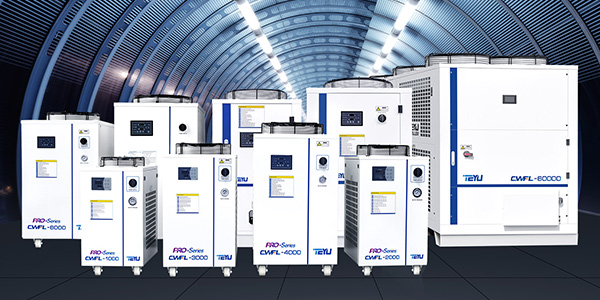What requirements do laser cutting machines have for their working environment? The main points include temperature requirements, humidity requirements, dust prevention requirements and water-recirculating cooling devices. TEYU laser cutter chillers are compatible with various laser cutting machines available in the market, providing stable and continuous temperature control, ensuring the normal operation of the laser cutter and effectively prolonging its lifespan.
The Working Environment Requirements and Necessity of Laser Chiller for Laser Cutting Machines
Laser cutting machines are high-precision, high-efficiency processing equipment widely used in manufacturing and processing industries. However, the working environment of laser cutting machines significantly impacts the equipment's performance and lifespan. Do you know what requirements laser cutting machines have for their working environment?
1. Temperature Requirements
Laser cutting machines must operate in a constant temperature environment. Only under constant temperature conditions can the electronic components and optical elements of the equipment remain stable, ensuring laser cutting accuracy and performance. Both excessively high and low temperatures can affect the normal operation and cutting effectiveness of the equipment. To ensure the system works well, the operating temperature should not exceed 35°C.
2. Humidity Requirements
Laser cutting machines generally require the relative humidity of the working environment to be less than 75%. In high-temperature and high-humidity environments, water molecules in the air can easily condense inside the equipment, leading to issues such as short circuits in circuit boards and a decline in the quality of the laser beam.
3. Dust Prevention Requirements
Laser cutting machines demand that the working environment be free from a large amount of dust and particles. These substances can contaminate the laser equipment's lenses and optical elements, resulting in a decrease in cutting quality or damage to the equipment.
The Necessity of Configuring Water Chiller for Laser Cutter
In addition to environmental requirements, laser cutting machines need to be equipped with auxiliary devices to ensure their normal operation and extend their lifespan. Among these, a circulating water chiller is one of the essential auxiliary devices.
TEYU's laser chillers are water-recirculating cooling devices specifically designed for laser processing equipment. They can provide constant temperature, flow, and pressure cooling water, helping to promptly remove the generated heat from laser processing equipment. This ensures the normal operation of the laser processing equipment and enhances the quality of laser cutting. Without a configured laser chiller, the performance of the laser cutting machine may decrease as temperatures rise, and in severe cases, it can even damage the laser processing equipment.
TEYU's laser cutter chillers are compatible with various laser cutting machines available in the market. They provide stable and continuous temperature control, ensuring the normal operation of the laser cutting machine and effectively prolonging its lifespan. If you are searching for a reliable water chiller for your laser cutting machines, please feel free to send an email to sales@teyuchiller.com to get your exclusive cooling solutions now!

We're here for you when you need us.
Please complete the form to contact us, and we'll be happy to help you.









































































































